 |
 |
 |
| |
Overall First-Line ART Efficacy Only 60% at 82 Weeks in Meta-Analysis
|
| |
| |
7th IAS Conference on HIV Pathogenesis, Treatment and Prevention, June 30-July 3, 2013, Kuala Lumpur
Mark Mascolini
Meta-analysis of 114 trials of first-line antiretroviral therapy (ART) determined that fewer than two thirds of study participants had a viral load below 50 copies after 82 weeks of follow-up [1]. But people starting US-guideline "preferred" regimens had a 10% better efficacy rate than people starting an "alternative" regimen. And those beginning therapy with a viral load above 100,000 copies did better with an integrase inhibitor or ritonavir-boosted-PI combination than with a nonnucleoside (NNRTI) or an unboosted protease inhibitor (PI).
Current preferred antiretroviral regimens combine tenofovir plus emtricitabine or lamivudine with (1) efavirenz, (2) darunavir/ritonavir, (3) atazanavir/ritonavir, or (4) raltegravir. The latest guidelines, which no longer consider viral load as a treatment trigger, rely on serial assessment of individual trials. Researchers at the University of New South Wales wondered whether meta-analysis of trials assessing first-line regimens would offer further insight into predictors of antiretroviral success and responses in subpopulations. The primary objective of this analysis was to determine overall efficacy (undetectable viral load) over maximum follow-up. Secondary objectives included predicting efficacy according to (1) pretreatment viral load above or below 100,000 copies and (2) preferred versus alternative first-line regimens.
The analysis included studies enrolling antiretroviral-naive adults, lasting at least 48 weeks, and using an intention-to-treat efficacy analysis. The investigators did not consider trials of unrecommended regimens, such as single boosted PIs, or studies that used directly observed therapy. They reviewed MEDLINE, clinical trial registries, conference presentations, product labels and medical reviews, and study synopses from manufacturers through the end of 2012.
The investigators found 114 studies with 216 arms, 91% of them randomized and 44% placebo-controlled. A total of 40,124 people participated in these trials. Ten trials began before 1996, 17 began in 2009-2010, and the other start dates were approximately evenly distributed over 1997-1999, 2000-2002, 2003-2005, and 2006-2008. Half of the trials lasted 48 weeks, 29% lasted 96 weeks, and 21% lasted 144 weeks. Three quarters of participants (76%) were men and two thirds (65%) were white. Age averaged 37 years.
The largest fraction of study arms used an NNRTI (48.6%), followed by a boosted PI (24.2%), an unboosted PI (14.2%), an integrase inhibitor (5.4%), and three nucleosides (4.4%). Throughout all trials, 25% of study participants stopped treatment prematurely, 8.1% for adverse events and 3.5% for virologic failure. Overall virologic efficacy improved from 43% in studies starting in 1994 to 78% in studies starting in 2010. Rates of treatment cessation dropped from 35% in 1994 to 16% in 2010.
Multivariate analysis determined that, compared with a backbone of tenofovir/emtricitabine, an abacavir/lamivudine backbone cut chances of virologic efficacy (coefficient -7.6, P = 0.003), as did backbones of zidovudine/lamivudine (coefficient -13.3, P < 0.001), stavudine/lamivudine (coefficient -11.4, P < 0.001), stavudine/didanosine (coefficient -18.4, P < 0.001), and zidovudine/didanosine (coefficient -35.3, P < 0.001).
Compared with starting an NNRTI as a third drug, starting an integrase inhibitor improved chances of virologic efficacy (coefficient 11.9, P = 0.002), while starting with an unboosted PI (coefficient -15.0, P < 0.001) or a third nucleoside (coefficient -10.7, P = 0.002) lowered chances of efficacy. Virologic efficacy did not differ significantly between starting with a boosted PI or an NNRTI.
Average difference in virologic efficacy was 8.4% lower in people starting treatment with a viral load above versus below 100,000 copies (95% confidence interval [CI] 6.0% to 10.9%, P < 0.001). Among people starting therapy with a viral load above 100,000 copies, integrase inhibitor regimens (coefficient 14.5, P = 0.005) and boosted PI regimens (coefficient 6.5, P = 0.042) had greater efficacy than NNRTI regimens, while unboosted PI regimens (coefficient -10.0, P = 0.045) and triple-nucleoside regimens (coefficient -20.0, P < 0.001) were less efficacious than NNRTI regimens.
Chances of virologic efficacy were an average 10% higher with US guideline preferred regimens than with alternative regimens (95% CI 7.6% to 15.4%, P < 0.001). Efficacy was similar across the four preferred first-line regimens, though there was a trend to superior efficacy with raltegravir.
The investigators concluded that overall mean virologic efficacy through 82 weeks was low in these studies, at only 60%. But the efficacy rate improved steadily over time and was much higher, 75%, with currently preferred first-line regimens through 99 weeks. A regimen combining an integrase inhibitor with tenofovir/emtricitabine had 81% efficacy in people starting therapy with a viral load above 100,000 copies. Because of the significant 8.4% efficacy difference between starting with a load above or below 100,000 copies, the researchers argued that guidelines should recommend beginning treatment before the viral load reaches 100,000 copies. Finally, they noted that despite a current focus on antiretroviral coformulations, fewer daily pills and doses did not independently predict overall efficacy in this analysis.
Reference
1. Lee FJ, Amin J, Carr A. Efficacy of initial antiretroviral therapy: a meta-analysis of 40,124 adults with up to 144 weeks' follow-up. 7th IAS Conference on HIV Pathogenesis, Treatment and Prevention, June 30-July 3, 2013, Kuala Lumpur. Abstract WEAB0104.
-----------------------------
Link to webcast:
http://pag.ias2013.org/flash.aspx?pid=245




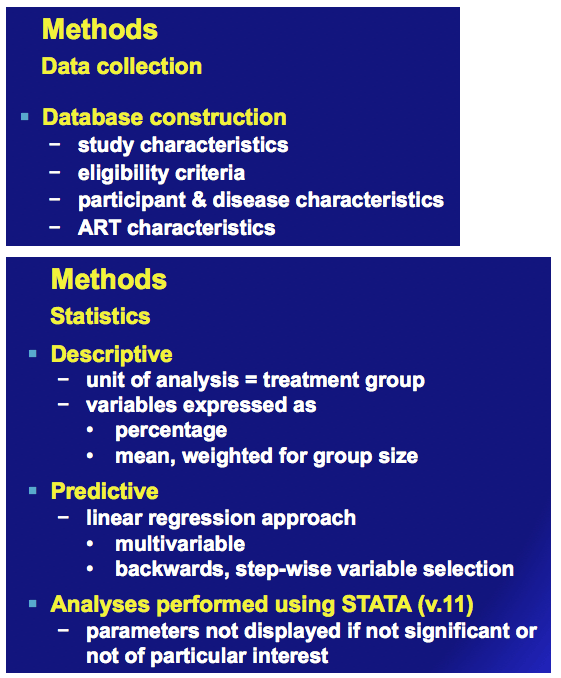
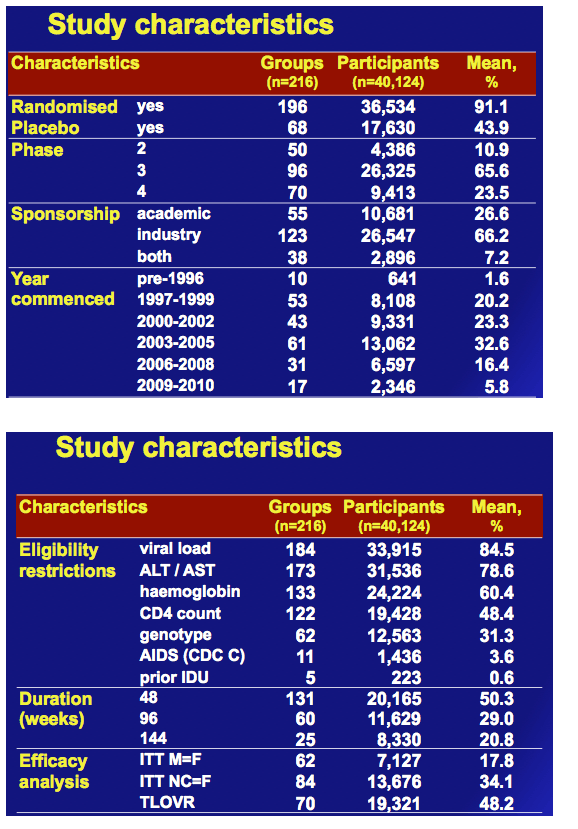

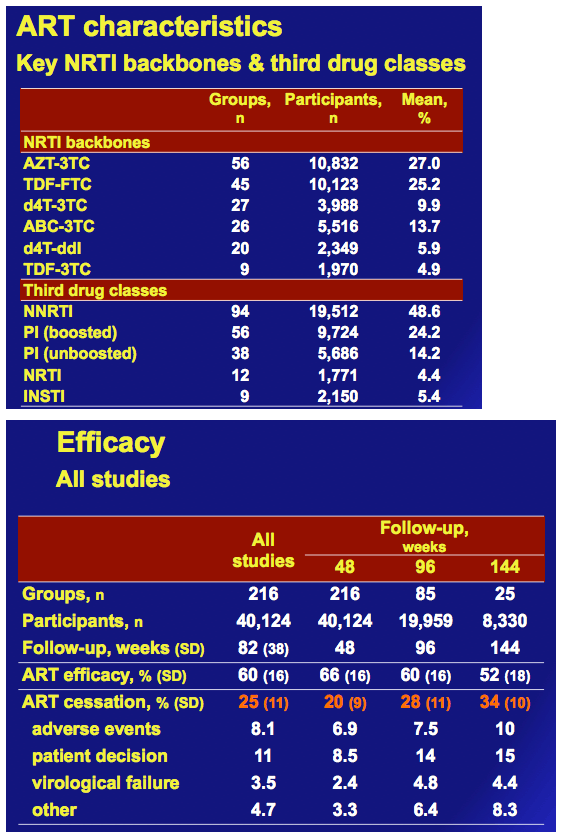
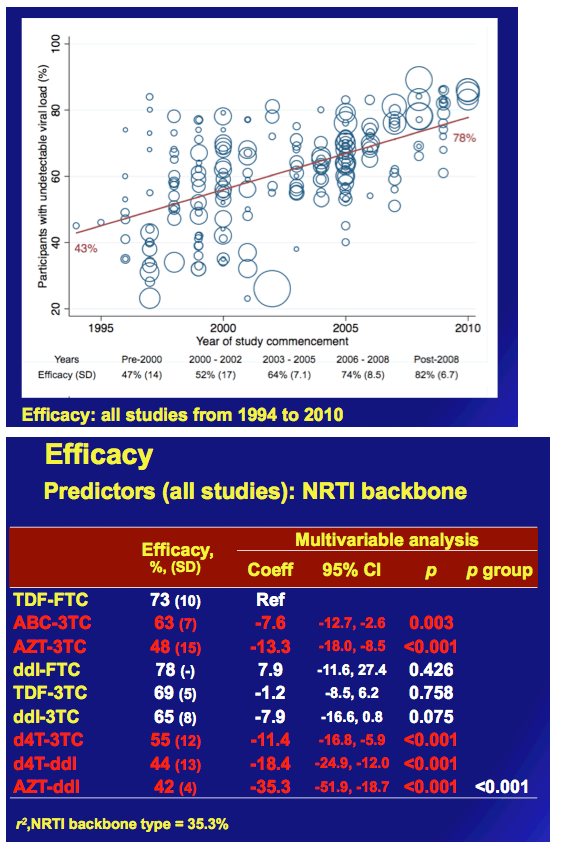

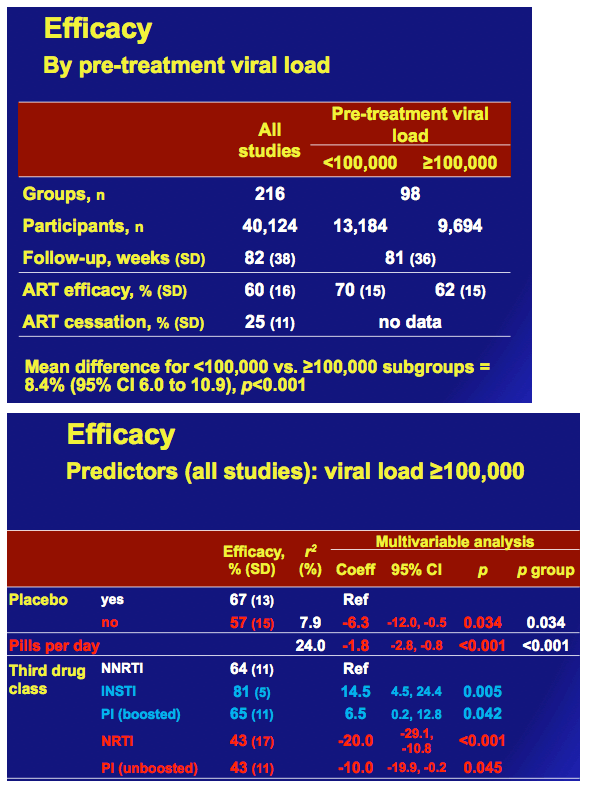
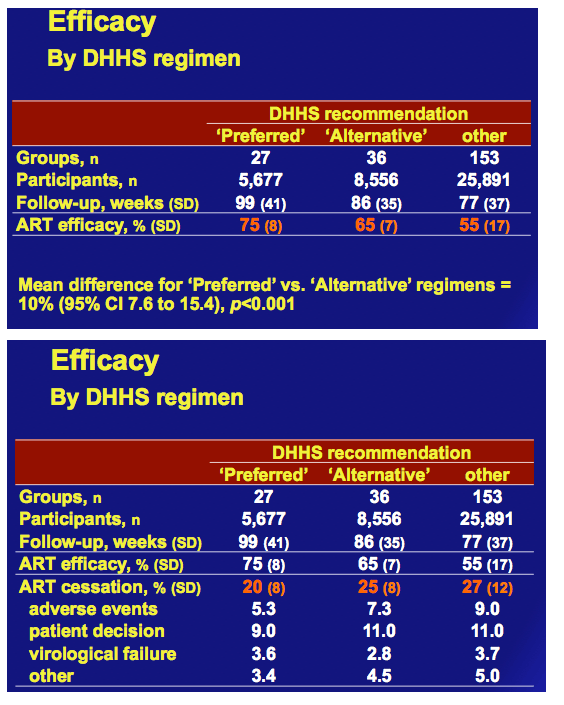
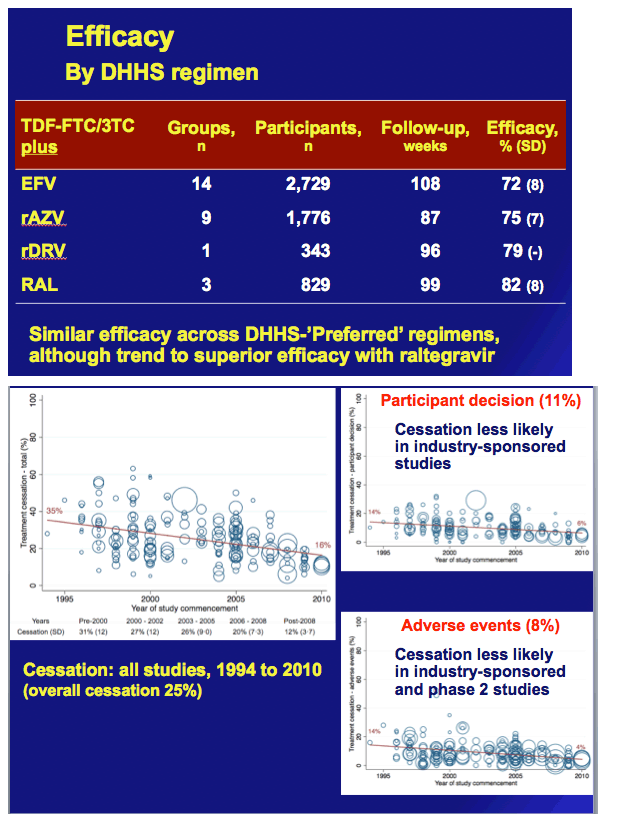
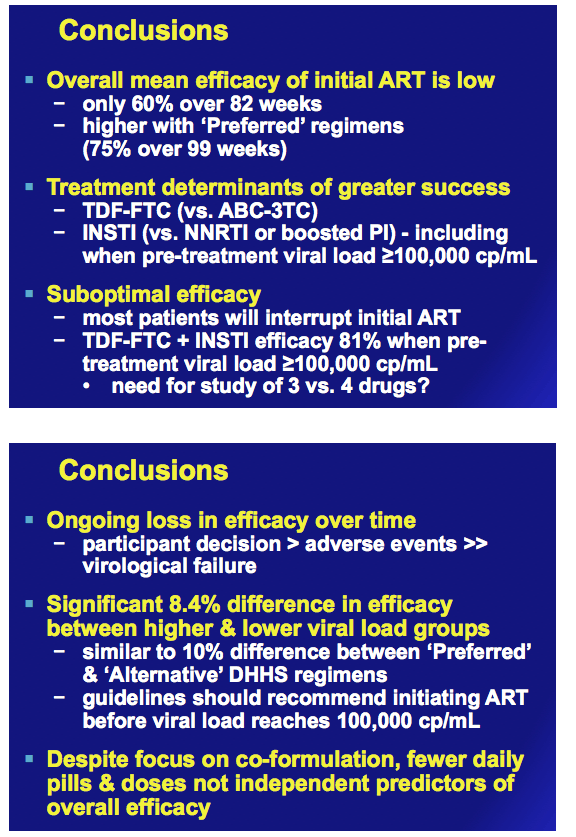
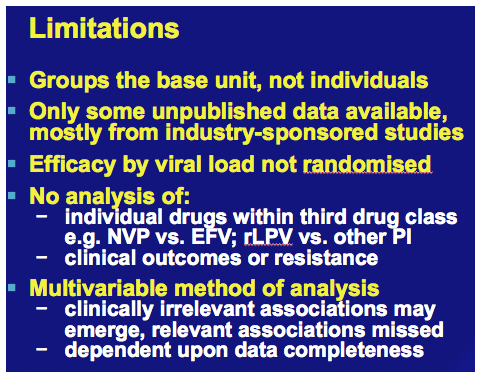
|
| |
|
 |
 |
|
|